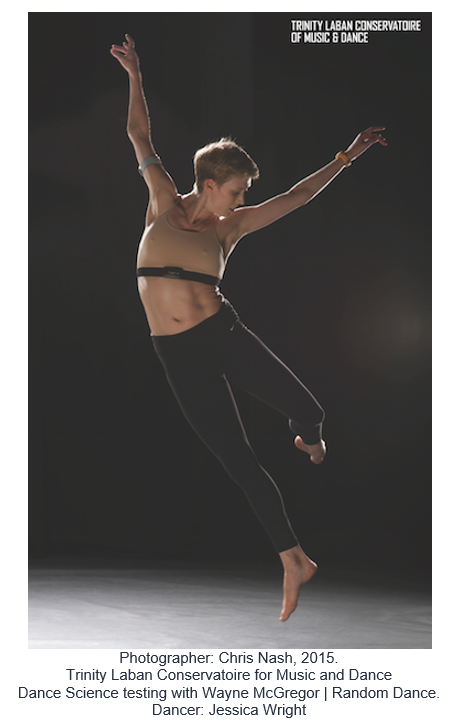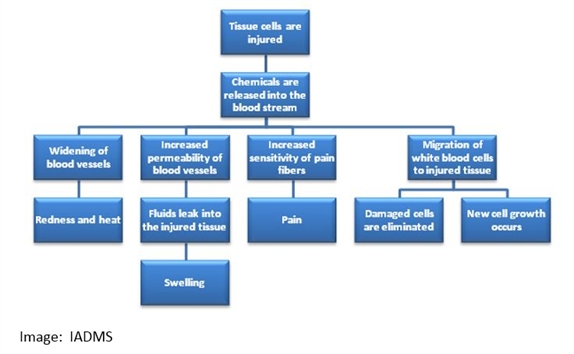Blog
Injury Prevention Research: Investigating patellar tendon development in adolescent dancers
Author: Aliza Rudavsky on behalf of the IADMS Education Committee
Our final injury prevention installment comes from Aliza, reporting early findings of a piece of research which has investigated patellar tendon development amongst adolescent dancers.
Read ArticleDancing Longer: Safe and effective dance practice to optimize performance, and minimize injury risk
Author: Edel Quin on behalf of the IADMS Education Committee
This is the third installment on the topic of dance injury on the IADMS blog. Elsa began by introducing us to injuries and injury management in dance, highlighting some great examples of specialized and tailored injury care for dancers in the UK (National Institute of Dance Medicine and Science) and the USA (Harkness Center for Dance Injury). This was followed up by Stephanie’s post on multi-disciplinary screening programmes as a means of highlighting “any concerns with regards to health, injury risk or mental and physical capabilities” and also the potential role of screening as an educational tool in contributing towards injury prevention. As the next contributor in this series, I focus on minimizing injury risk from the perspective of safe and effective dance principles as applied to dance teaching and dance making.
Read ArticleInjury Prevention: Screening as a tool for education
Author: Stephanie De’Ath on behalf of the IADMS Education Committee
Screening is often used for pre-entry to a school or company to highlight any concerns with regards to health, injury risk or mental and physical capabilities. Although research suggests that protocols should, where possible, be carried out by a physiotherapist or dance science professional there are some protocols that can be adopted by schools or companies with limited resources to at least complete some of the tests for educative purposes. Although not widely used as an educative tool, screening provides a great opportunity for dancers to learn more about their bodies, optimise performance and identify injury risk. By addressing the weaknesses or concerns which arise as a result of the screen, a programme of activity can be developed to compliment training and reduce the likelihood of injury. As a member of Trinity Laban's screening team for the past four years, in this post I will explore how screening can contribute to injury prevention from an educational perspective.
Read ArticleAlignment of the leg and its impact on the dancer's knee: Clips from the 2014 Annual Meeting
Presented by: Liane Simmel
Over the last decade as more and more acrobatic movements invaded the various dance styles, the strain on the dancer’s knees has largely increased. Training on hard, inappropriate floors or dancing choreographies in high heels can add even more problems. Pirouettes on the knees, knee drops, and even a plié in fourth position require particular leg stability and optimal mobility in the knee. But dancers often pay little attention to their knees. They are seldom specifically warmed up, directly trained or used consciously in everyday life. Nonetheless, their functionality is a top priority if dancers’ knees are to be kept fit and healthy.
Read ArticleAn Introduction to Dance Injury
Author: Elsa Urmston on behalf of the IADMS Education Committee
Well, it’s the moment that all dancers and their teachers dread. Sustaining an injury in dance can be at best, a ‘momentary’ interruption to dance training and performance, at worst a career-ending catastrophe. Thankfully, dance medicine and science colleagues have produced a vast range of conditioning and injury prevention strategies to enable dancers to be stronger and ever more versatile, as well as take ownership over injury if, as and when it might occur. Yet of course, by just looking at the repertoire of our modern dance and ballet companies, we can see that choreographers and audiences have increased their expectations of what the human body can achieve. Injury remains a very real possibility.
Read ArticlePhysiotherapy with the heart of a dancer – a personal history
Author: Dinah Hampson
When I was five, I saw my first full-length ballet and fell in love. I begged for lessons and studied dance for the next ten years. Despite passion, talent and training I didn’t have the physical facility for a career on the stage and I chose a different path. Ballet is defined as an artistic dance form performed to music using precise and highly formalized set steps and gestures. I assumed my years of studio time were forgotten when university led me to a career in physiotherapy.
Read Article- IADMS 34th Annual Conference - Experience Point of View: Jennifer Milner
- IADMS 34th Annual Conference - Experience Point of View: Joanna Nicholas
- IADMS 34th Annual Conference - Experience Point of View: Erika Mayall
- Beginning ASL for Medical Students & Health Practitioners
- Relative Energy Deficiency in Dance




 BACK
BACK